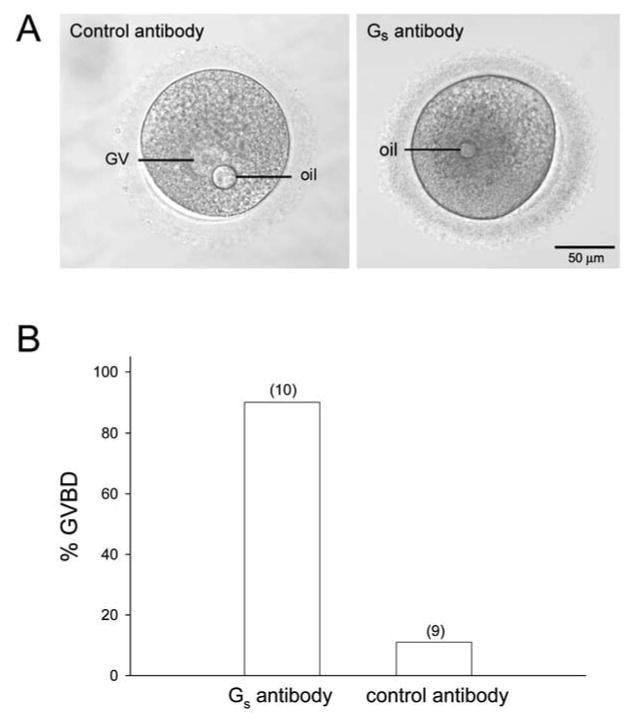Fig. 6.

Inhibiting the activity of Gs causes meiotic resumption in human oocytes. A) Oocytes microinjected with 170-260 μg/ml Gs antibody or non-immune IgG in the presence of, and following an overnight culture in, 10 μM cilostamide. Oocytes injected with the Gs antibody (right) underwent GVBD, whereas control IgG-injected oocytes(left) remained arrested at the GV stage. The oil drops were introduced into the oocytes as a consequence of the microinjection procedure. B) Percentages of oocytes that underwent GVBD following injection of the Gs antibody or control IgG. The numbers in parentheses are total number of oocytes injected. If injected oocytes did not undergo GVBD within 24 hrs after injection, their meiotic competence was confirmed by washing them into culture medium that did not contain cilostamide. Oocytes that underwent GVBD within 24 hrs after washing out the cilostamide were considered to be competent. Oocytes that did not undergo GVBD within 24 hrs after washing out the cilostamide were considered to be incompetent and were not included in the analysis. For these experiments, we found that 83% (10/12) of the oocytes injected with the Gs antibody were competent, and 90% (9/10) of the oocytes injected with IgG were competent. These percentages were similar to those we obtained from uninjected oocytes that were washed out of cilostamide following overnight culture (see Results). Oocytes injected with control IgG were cultured for either 6 (n=2) or 19-21 hrs (n=8) hrs prior to washing out the cilostamide; these oocytes were pooled for this analysis (n=10 total).
